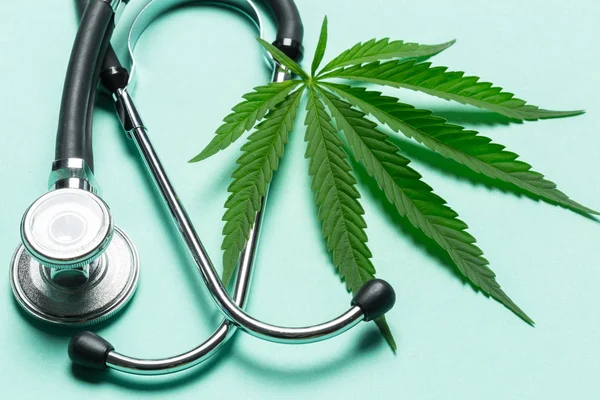What Patients Should Know Before Using Medical Marijuana
What Patients Should Know Before Using Medical Marijuana
Blog Article

As medical marijuana becomes increasingly recognized for its potential therapeutic benefits, more patients are considering its use as part of their treatment plans. However, navigating the world of medical marijuana can be complex, especially for those who are new to it or unsure of how it might affect their health. Understanding the basics of medical marijuana, including its benefits, risks, and legal status, is essential for anyone interested in exploring this option.
Patients should be informed about what medical marijuana is, how it works, and the various forms in which it can be consumed. It is also important to discuss the potential side effects, interactions with other medications, and the specific conditions it may help alleviate. By arming themselves with knowledge, patients can make more informed decisions and engage in meaningful conversations with their healthcare providers.
Understanding Medical Marijuana
Medical marijuana refers to the use of the cannabis plant or its extracts to alleviate symptoms and treat various medical conditions. Unlike recreational marijuana, which is often used for its psychoactive effects, medical marijuana is prescribed by healthcare professionals and is intended to provide therapeutic benefits. It contains different cannabinoids, such as THC and CBD, that interact with the body’s endocannabinoid system to help manage pain, reduce inflammation, stimulate appetite, and alleviate other symptoms.
Patients should be aware that the legal status of medical marijuana varies significantly by region. In some places, it is fully legalized for medical use, while in others, it remains restricted or illegal. It is crucial for patients to understand the regulations in their area and to obtain a prescription or recommendation from a qualified healthcare provider. This helps ensure that they are using marijuana safely and legally while benefiting from its therapeutic properties.
Furthermore, using medical marijuana may involve considerations about the method of consumption, dosage, and potential side effects. Different delivery methods include smoking, vaping, edibles, and tinctures, each with varying onset times and effects. Patients should discuss these options with their healthcare provider to find the most suitable approach for their specific medical condition and individual needs, allowing for a personalized and effective treatment plan.
Benefits and Risks
Medical marijuana offers a range of potential benefits for patients suffering from various conditions. One of the most recognized advantages is its effectiveness in alleviating chronic pain. Many patients report significant relief from conditions such as arthritis, multiple sclerosis, and cancer-related pain. Additionally, medical marijuana may help with symptoms of anxiety and depression, providing a natural alternative to conventional medications. For patients undergoing chemotherapy, it can also stimulate appetite and reduce nausea, improving overall quality of life during treatment.
However, the use of medical marijuana is not without its risks. Some individuals may experience adverse effects such as dizziness, drowsiness, or impaired cognitive function, which can be particularly concerning for those who need to operate machinery or drive. There is also a risk of developing a dependence on marijuana, especially in those with a history of substance use disorders. Furthermore, the long-term effects of medical marijuana use are still not fully understood, which raises concerns about its safety and efficacy over time.
Patients should also consider legal and regulatory aspects when using medical marijuana. The legality of medical marijuana varies by country and state, meaning patients must navigate varying laws that dictate its use and distribution. Consultation with healthcare professionals is essential, as they can provide guidance on appropriate dosages and potential interactions with other medications. Being informed about these benefits and risks can empower patients to make educated decisions regarding their treatment options.
Legal Considerations
The legal status of medical marijuana varies significantly from one jurisdiction to another. In some places, it is fully legalized and regulated, allowing patients access to a range of products and forms of consumption. In others, it remains illegal or restricted, which can impact a patient's ability to obtain medical marijuana. It is crucial for patients to familiarize themselves with their local laws, including any requirements for obtaining a medical marijuana card or recommendations from licensed healthcare providers.
Patients should also consider the implications of using medical marijuana in relation to employment and driving. Despite legalization in many areas, employers may have policies that prohibit marijuana use or testing positive for it, leading to potential job loss or disciplinary action. Likewise, operating a vehicle under the influence of marijuana can lead to legal consequences, including DUI charges. Understanding these factors is vital to ensuring that patients can manage their use of medical marijuana responsibly and within the bounds of the law.
How to Apply Medical Marijuana
Additionally, patients must be aware that federal law continues to classify marijuana as a Schedule I controlled substance. This essentially conflicts with state laws that allow for medical marijuana use, leading to complexities in legal protections for users. It is advisable for patients to consult legal professionals if they have questions or concerns about their rights and protections when using medical marijuana, ensuring they navigate this intricate landscape effectively.
Report this page